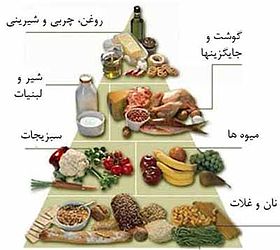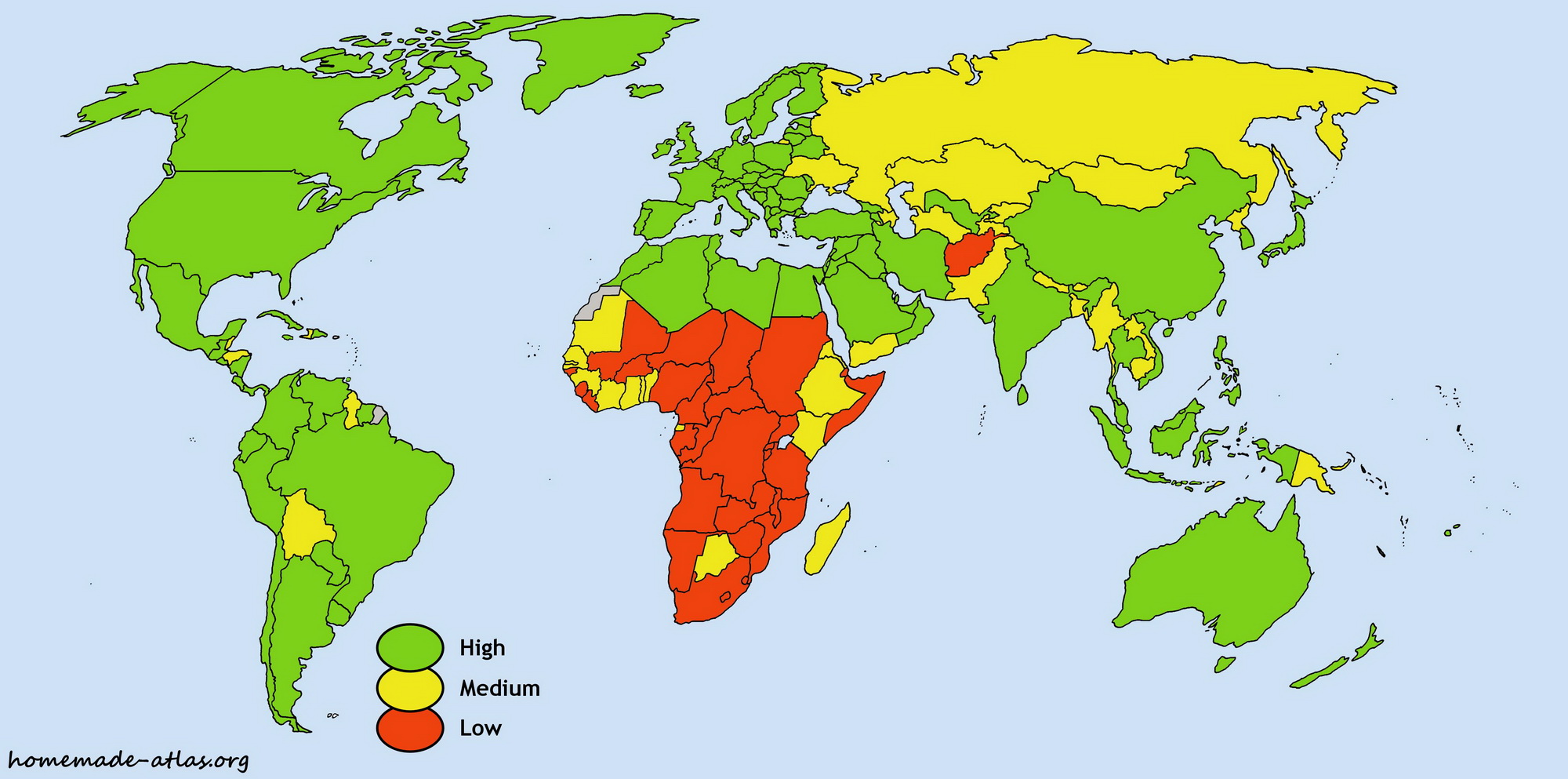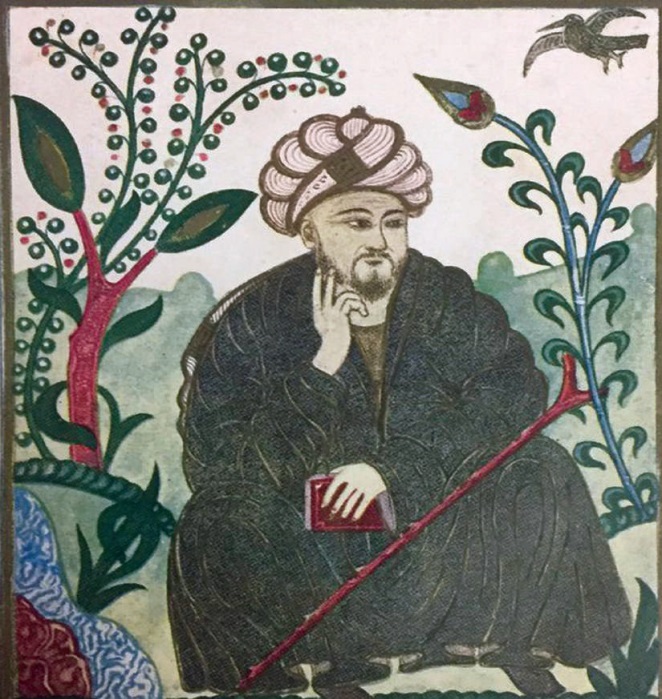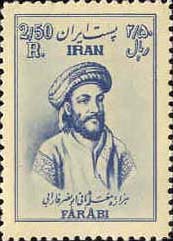
Among many various types of cuisines found around the world, the Persian Cuisines in general and a special kind of Rice and Kebab (in Persian: Chelow Kebab) in particular are probably the most famous ones. The Persian Cuisines are actually the components of the Persian Culture and the American scholar of Iranian and Central Asian Studies Richard Nelson Frye has noted that, 'Iran’s glory has always been its culture'. Although every city in different provinces of Iran may have a very distinct popular dish, Chelow Kebab along with Head and Hooves (in Persian: Kalleh Pacheh), and Mutton Soup (in Persian: Aab Goosht) are the most popular dishes in all over the country. In this article, the most important facts about those cuisines as the First Iranian Popular Dishes are studied and discussed.
CHELOW KEBAB
A. Chelow Kebab as Served Today: In Iran, Chelow Kebab is one of the most popular dishes in lunch, though it may be also severed for dinner. It simply consists of cooked rice and kebab, and saffron may be also added to the rice. The Chelow is the rice which is first soaked, boiled, then drained and finally steamed. The Kebab is predominantly made with lamb, and the different styles of kebab vary from a thick and chunky Kebab-e Koobideh (made with minced meat, finely grated onion and salt) to a finer Kebab-e Barg (sliced meat). To make a whole-meat kebab, the lamb meat is generally marinated with finely chopped onion, turmeric (in Persian: Zard Choobeh), salt and lemon juice. Kebab-e Barg is a Persian-style barbecued lamb. A plate of Chelow combined with one skewer (in Persian: Seekh) of Kabab-e Koobideh, and one skewer of Kebab-e Barg is called as Chelow Kebab-e Sultani. In recent years, a new variety of Chelow Kebab named as Pahlavani is also served in some Iranian restaurants. A plate of Pahlavani Chelow Kebab is loaded with more rice and more skewers of kebab as compared with the regular one.
Chelow Kebab is usually served with grilled tomatoes on the side and butter on the top of rice. Powdered sumac (in Persian: Somaagh) will be also accessible and if desired, it can be scattered or sprinkled over the rice. A raw egg yolk may be also placed on top of the rice, though that is completely optional and less common in recent years due to the concerned safety surrounding the consumption of the raw eggs (Many nutritionists believe that the raw eggs can contain Salmonella and should not be tasted or eaten until they are cooked thoroughly). The traditional beverage of choice to accompany Chelow Kebab is an Iranian sour yogurt drink (in Persian: Doogh), flavored with salt and mint, and sometimes made with carbonated mineral water.
B. The History: Many Europeans as diplomats, explorers, reporters and so on have visited Iran (known as Persia at the time) since the era of Safavid Dynasty (1500-1736). In their memoirs and reports, they wrote a lot about the different types of cooked and drained rice (Chelow), cooked rice (Polow), stews, gravies, pickles, and jams. They did not, however, write anything about Chelow Kebab in the sense that it is served today. Iran Chamber published an article online and speculated that the recipe of Chelow Kebab was given to the Iranian people either through Caucasians or as written by Mirza Mohammad Reza Moatamedol Ketab-e Shams-e Larijani, through crown prince Nasereddin Mirza Qajar (NMQ) who demanded the recipe from the Caucasians. Nevertheless, more research is needed to support the speculation reported by the Website of Iran Chamber. At any rate, it should be noted that during Qajar era, the crown princes used to live in Tabriz, the capital city of Azerbaiijan, which borders with Caucasia. The special cook of NMQ who was responsible to prepare Chelow Kebab named as Naayeb.
As NMQ moved to Tehran and became Nasereddin Shah Qajar (NSQ) in1848, Naayeb also accompanied the Shah and was promoted as the Court Chef (in Persian: Aashpaz Baashi-e Darbaar). Naayeb later left the royal court and established a restaurant, which was the first Chelow Kebab Restaurant in Tehran. During NSQ, Mohammad Hassan Etemadolsaltaneh was the Minister of Publications and Translation Affairs (in Persian: Vazir-e Enteba-aat va Daarol Tarjomeh), and in his memoir he refers to the same restaurant that was in operation in 1871 (138 years ago) and it was located near to Tehran Bazaar.
During Ahmad Shah Qajar or ASQ (ruled 1909-1925); the Court Chef was Javad Farifteh who accompanied ASQ to Paris as ASQ was toppled and deposed. Later, Javad Farifteh established a Chelow Kebab Restaurant in Paris, France. His restaurant was in operation for many years and could attract many Iranians and French customers.
In Pahlavi era (1925-1979), many Chelow Kebab Restaurants were established in Tehran and elsewhere. Hassan Shamshiri was the owner of the most famous restaurant serving Chelow Kebab in Tehran. Shamshiri’s wife was from Naayeb family, and his restaurant was in a four-story building located in Sabzeh Maydan near to the Bazaar of Tehran. The reputations of both Naayeb and Shamshiri Chelow Kebab Restaurants have crossed the borders and lots of restaurants using the same names have been established in the UK, Germany, France, Australia, the USA, and many other countries.
A. Chelow Kebab as Served Today: In Iran, Chelow Kebab is one of the most popular dishes in lunch, though it may be also severed for dinner. It simply consists of cooked rice and kebab, and saffron may be also added to the rice. The Chelow is the rice which is first soaked, boiled, then drained and finally steamed. The Kebab is predominantly made with lamb, and the different styles of kebab vary from a thick and chunky Kebab-e Koobideh (made with minced meat, finely grated onion and salt) to a finer Kebab-e Barg (sliced meat). To make a whole-meat kebab, the lamb meat is generally marinated with finely chopped onion, turmeric (in Persian: Zard Choobeh), salt and lemon juice. Kebab-e Barg is a Persian-style barbecued lamb. A plate of Chelow combined with one skewer (in Persian: Seekh) of Kabab-e Koobideh, and one skewer of Kebab-e Barg is called as Chelow Kebab-e Sultani. In recent years, a new variety of Chelow Kebab named as Pahlavani is also served in some Iranian restaurants. A plate of Pahlavani Chelow Kebab is loaded with more rice and more skewers of kebab as compared with the regular one.
Chelow Kebab is usually served with grilled tomatoes on the side and butter on the top of rice. Powdered sumac (in Persian: Somaagh) will be also accessible and if desired, it can be scattered or sprinkled over the rice. A raw egg yolk may be also placed on top of the rice, though that is completely optional and less common in recent years due to the concerned safety surrounding the consumption of the raw eggs (Many nutritionists believe that the raw eggs can contain Salmonella and should not be tasted or eaten until they are cooked thoroughly). The traditional beverage of choice to accompany Chelow Kebab is an Iranian sour yogurt drink (in Persian: Doogh), flavored with salt and mint, and sometimes made with carbonated mineral water.
B. The History: Many Europeans as diplomats, explorers, reporters and so on have visited Iran (known as Persia at the time) since the era of Safavid Dynasty (1500-1736). In their memoirs and reports, they wrote a lot about the different types of cooked and drained rice (Chelow), cooked rice (Polow), stews, gravies, pickles, and jams. They did not, however, write anything about Chelow Kebab in the sense that it is served today. Iran Chamber published an article online and speculated that the recipe of Chelow Kebab was given to the Iranian people either through Caucasians or as written by Mirza Mohammad Reza Moatamedol Ketab-e Shams-e Larijani, through crown prince Nasereddin Mirza Qajar (NMQ) who demanded the recipe from the Caucasians. Nevertheless, more research is needed to support the speculation reported by the Website of Iran Chamber. At any rate, it should be noted that during Qajar era, the crown princes used to live in Tabriz, the capital city of Azerbaiijan, which borders with Caucasia. The special cook of NMQ who was responsible to prepare Chelow Kebab named as Naayeb.
As NMQ moved to Tehran and became Nasereddin Shah Qajar (NSQ) in1848, Naayeb also accompanied the Shah and was promoted as the Court Chef (in Persian: Aashpaz Baashi-e Darbaar). Naayeb later left the royal court and established a restaurant, which was the first Chelow Kebab Restaurant in Tehran. During NSQ, Mohammad Hassan Etemadolsaltaneh was the Minister of Publications and Translation Affairs (in Persian: Vazir-e Enteba-aat va Daarol Tarjomeh), and in his memoir he refers to the same restaurant that was in operation in 1871 (138 years ago) and it was located near to Tehran Bazaar.
During Ahmad Shah Qajar or ASQ (ruled 1909-1925); the Court Chef was Javad Farifteh who accompanied ASQ to Paris as ASQ was toppled and deposed. Later, Javad Farifteh established a Chelow Kebab Restaurant in Paris, France. His restaurant was in operation for many years and could attract many Iranians and French customers.
In Pahlavi era (1925-1979), many Chelow Kebab Restaurants were established in Tehran and elsewhere. Hassan Shamshiri was the owner of the most famous restaurant serving Chelow Kebab in Tehran. Shamshiri’s wife was from Naayeb family, and his restaurant was in a four-story building located in Sabzeh Maydan near to the Bazaar of Tehran. The reputations of both Naayeb and Shamshiri Chelow Kebab Restaurants have crossed the borders and lots of restaurants using the same names have been established in the UK, Germany, France, Australia, the USA, and many other countries.
KALLEH PACHEH
Kalleh Pacheh or the sheep’s head and hooves soup is probably the most traditional of Iranian breakfast dishes. Kalleh Pacheh can be prepared using various recipes, and here are the ingredients of a recipe as recommended online: '1 clean lamb’s head, 6 clean lamb’s hooves, 2 large whole onions, 4 cloves garlic, 1 cinnamon stick, 4 bay leaves, 1 tbsp turmeric, and ample amounts of salt and pepper'. And here is the method of preparation: 'In a large pot, soak head and hooves in cold water over night. Drain from the soaking water and cover in clean water. Bring to the boil and then change the water. In the fresh water add all ingredients with head and hooves, and bring to boil. Simmer for 8 hours to become tender, and then serve with fresh bread and lime juice'.
There are many restaurants in various cities in Iran where customers go and eat Kalleh Pacheh every morning. Its popularity is under threat, however, from the spread of fast food and from the medical doctors warning about the dish’s high cholesterol. Some people drink a cup of strong tea (in Persian: Chai-e Por Rang) after eating Kalleh Pacheh to neutralize the detrimental effects of high cholesterol. Research works suggest that drinking black tea may reduce the risk of Coronary Heart Diseases. (View the online article on the Factual Department of Tea written by this author).
Thomas Erdbrink from Washington Post Foreign Service visited one of those restaurants in Tehran and noted that the owner of the restaurant took a cooked sheep’s head and held it in the air and said, 'Look at this, this has exactly the same ingredients as a human head, only we eat it.' He stripped the head bare of all edible parts until only the skull remained. 'The brains, the tongue and the skin are all very tasty, as are the eyes,' he explained. 'Put some lemon and cinnamon over it and you will have a very tasty start to your morning'. In Iran, one of the best types of Kalleh Pacheh can be found in Kashan, a city in the central province of Isfahan.
Famous Iranian poet Mowlana Jalaledin Mohammad Mowlavi Rumi (1207-1273) possibly did not try Kalleh Pacheh in Kashan and that was why he did not praise this Iranian popular dish in one of his poems! He wrote that, 'I am only a follower of love and care. From the bowl of head and hooves, I will not share'. The Persian text of his poem on Kalleh Pacheh reads as follows: 'Man sar nakhoram keh sar geraan ast. Pacheh nakhoram keh ostokhaan ast. Khordam ze tereed-o pacheh yek chand. As pacheh sar-e maraa zyaan ast. Zin pass sar-e pacheh nist maa raa. Maa raa va kassi keh ahl-e khaan ast. Man eshgh khoram keh khoshgavaar ast. Zough-e dahan ast-o nashv-e jaan ast' (Read More about Persian term of Tereed below).
Kalleh Pacheh or the sheep’s head and hooves soup is probably the most traditional of Iranian breakfast dishes. Kalleh Pacheh can be prepared using various recipes, and here are the ingredients of a recipe as recommended online: '1 clean lamb’s head, 6 clean lamb’s hooves, 2 large whole onions, 4 cloves garlic, 1 cinnamon stick, 4 bay leaves, 1 tbsp turmeric, and ample amounts of salt and pepper'. And here is the method of preparation: 'In a large pot, soak head and hooves in cold water over night. Drain from the soaking water and cover in clean water. Bring to the boil and then change the water. In the fresh water add all ingredients with head and hooves, and bring to boil. Simmer for 8 hours to become tender, and then serve with fresh bread and lime juice'.
There are many restaurants in various cities in Iran where customers go and eat Kalleh Pacheh every morning. Its popularity is under threat, however, from the spread of fast food and from the medical doctors warning about the dish’s high cholesterol. Some people drink a cup of strong tea (in Persian: Chai-e Por Rang) after eating Kalleh Pacheh to neutralize the detrimental effects of high cholesterol. Research works suggest that drinking black tea may reduce the risk of Coronary Heart Diseases. (View the online article on the Factual Department of Tea written by this author).
Thomas Erdbrink from Washington Post Foreign Service visited one of those restaurants in Tehran and noted that the owner of the restaurant took a cooked sheep’s head and held it in the air and said, 'Look at this, this has exactly the same ingredients as a human head, only we eat it.' He stripped the head bare of all edible parts until only the skull remained. 'The brains, the tongue and the skin are all very tasty, as are the eyes,' he explained. 'Put some lemon and cinnamon over it and you will have a very tasty start to your morning'. In Iran, one of the best types of Kalleh Pacheh can be found in Kashan, a city in the central province of Isfahan.
Famous Iranian poet Mowlana Jalaledin Mohammad Mowlavi Rumi (1207-1273) possibly did not try Kalleh Pacheh in Kashan and that was why he did not praise this Iranian popular dish in one of his poems! He wrote that, 'I am only a follower of love and care. From the bowl of head and hooves, I will not share'. The Persian text of his poem on Kalleh Pacheh reads as follows: 'Man sar nakhoram keh sar geraan ast. Pacheh nakhoram keh ostokhaan ast. Khordam ze tereed-o pacheh yek chand. As pacheh sar-e maraa zyaan ast. Zin pass sar-e pacheh nist maa raa. Maa raa va kassi keh ahl-e khaan ast. Man eshgh khoram keh khoshgavaar ast. Zough-e dahan ast-o nashv-e jaan ast' (Read More about Persian term of Tereed below).
AAB GOOSHT
Aab Goosht (also spelled as Abgoosht or Abgusht) literary is composed of Aab (Water, Soup) and Goosht (meat). But it is a mutton soup made with lamb meat, chickpea (in Persian: Nokhood), dried white beans, peeled onions, tomatoes, turmeric (in Persian: Zard Choobeh), salt, pepper, and sometimes with dried limes (in Persian: Limu Ammani). Aab Goosht is considered as an all-time-meal, though it is mostly served either for lunch or for dinner.
Here are the ingredients of Aab Goosgt as recommended online: '500 grams lamb or beef, 1 cup of chicken peas, 1 cup of dried white beans, 1 medium onion as chopped, 2 medium potatoes as peeled, 2 medium tomatoes, half teaspoon salt, 1 teaspoon turmeric and black pepper'. And here is the method of preparation: 'Wash the meat and put it in a medium size pot, half filled with water, add the peas and beans, the onion, salt, turmeric and pepper and let it cook for 1-2 hours on medium-low heat. Add the potatoes and the tomatoes (they get too soft too soon if you add them at the beginning), and let it cook on low heat until all the ingredients are soft. Take the pot out, separate the juice from the ingredients and pour the ingredients in a bowl and using a masher (in Persian: Goosht Koob) or something similar, finely mash the whole mixture. Taste a small portion and add more salt and pepper if needed. When the mixture has a smooth texture, it can be served'. The Soup (Aab) is also served in separate bowls; the idea is to mix the soup with small pieces of Iranian bread like Taaftoon or Pita. A small piece of bread as soaked in water or soup is called as Sop (in Persian: Tereed or Tareet) and it is tasteful in some culture.
The original form of this meal is referred to as Deezi, aka Dizi, which is served in a bowl. Michelle who tried Deezi in a restaurant in San Francisco (USA) wrote that, 'They bring out an empty bowl and a metal tall bowl with lamb, tomatoes, herbs, lamb broth, beans, and more. First you pour the juice out into the empty bowl. Leave a little in the metal bowl. Then, you take the pestle and start smoothing away. The Lamb is so tender, and everything just mashes together. You can eat it all'.
Aab Goosht (also spelled as Abgoosht or Abgusht) literary is composed of Aab (Water, Soup) and Goosht (meat). But it is a mutton soup made with lamb meat, chickpea (in Persian: Nokhood), dried white beans, peeled onions, tomatoes, turmeric (in Persian: Zard Choobeh), salt, pepper, and sometimes with dried limes (in Persian: Limu Ammani). Aab Goosht is considered as an all-time-meal, though it is mostly served either for lunch or for dinner.
Here are the ingredients of Aab Goosgt as recommended online: '500 grams lamb or beef, 1 cup of chicken peas, 1 cup of dried white beans, 1 medium onion as chopped, 2 medium potatoes as peeled, 2 medium tomatoes, half teaspoon salt, 1 teaspoon turmeric and black pepper'. And here is the method of preparation: 'Wash the meat and put it in a medium size pot, half filled with water, add the peas and beans, the onion, salt, turmeric and pepper and let it cook for 1-2 hours on medium-low heat. Add the potatoes and the tomatoes (they get too soft too soon if you add them at the beginning), and let it cook on low heat until all the ingredients are soft. Take the pot out, separate the juice from the ingredients and pour the ingredients in a bowl and using a masher (in Persian: Goosht Koob) or something similar, finely mash the whole mixture. Taste a small portion and add more salt and pepper if needed. When the mixture has a smooth texture, it can be served'. The Soup (Aab) is also served in separate bowls; the idea is to mix the soup with small pieces of Iranian bread like Taaftoon or Pita. A small piece of bread as soaked in water or soup is called as Sop (in Persian: Tereed or Tareet) and it is tasteful in some culture.
The original form of this meal is referred to as Deezi, aka Dizi, which is served in a bowl. Michelle who tried Deezi in a restaurant in San Francisco (USA) wrote that, 'They bring out an empty bowl and a metal tall bowl with lamb, tomatoes, herbs, lamb broth, beans, and more. First you pour the juice out into the empty bowl. Leave a little in the metal bowl. Then, you take the pestle and start smoothing away. The Lamb is so tender, and everything just mashes together. You can eat it all'.
EPILOGUE: In addition to Chelow Kebab, Kalleh Pacheh, and Aab Goosht there are many other popular dishes in Iran, i.e., Beryooni, aka Beryani (in Isfahan), Baghalaa Ghategh and Mirza Ghassemi (in Gilan), Ghormeh Sabzi, Dampokht, Dolmeh, Chelow Khoresht-e Baademjan, Chelow Khoresht-e Fessenjan, Joojeh Kebab, Shirin Polow, Zeresk Polow, Keshmish Polow, Sabzi Polow va Maahi, Tah Cheen, Kebab-e Barreh, Toss Kebab, Chelow Morgh, Khaagineh, Shir Berenj, Sholeh Zard, Aash Reshteh, and Halim (in most places of the country) and many many more.
Those dishes are all nutritious and delicious, and just the smell of each of them will produce lots of saliva in your mouth!
Manouchehr Saadat Noury, PhD
REFERENCES
1. Aghamiri, J. (2009): Online Notes on Kaleh Pacheh: Ingredients & Preparation.
2. Erdbrink, T. (2009): Online Article on 'In Tehran, the Best Part of Waking Up: A Sheep’s Head on Your Plate', the Washington Post, (Published on 13 March 2009).
3. Etemadolsaltaneh, M. H. (1875): Yaad Dasht Haay-e Roozaaneh (in Persian), Edited & Published by Iraj Afshar in 1957, Tehran, Iran.
4. Frye, R. N. (1989): The Golden Age of Persia, ed., London: Butler & Tanner Ltd.
5. Iran Chamber Website (2009): Online Article on History of Most Famous and Most Popular Iranian Dish, Chelo-Kabab, and Online Note on Aabgoosht.
6. Iran Daily Website (2009): Online Article on For a Hearty Iranian Kebab.
7. Michelle, E. (2007): Online Notes on Deezi.
8. Saadat Noury, M. (1982): Principles of Human Nutrition in Health and Disease (in Persian), ed., Tehran, Iran.
9. Saadat Noury, M. (2007): Various Articles on the History of Iran.
10. Saadat Noury, M. (2008): Online Articles on Science and on Food and Nutrition.
11. Saadat Noury, M. (2009): Online Articles on First Iranians.
12. Saadat Noury, M. (2009): Online Article on the Factual Department of Tea.
13. Various Sources (2009): Notes and News on Persian Cuisines.
14. Wikipedia Encyclopedia (2009): Online Notes on Persian Cuisines and Chelow Kebab
Originally published on 24 November 2009 here
MSN Selected Articles













.jpeg)